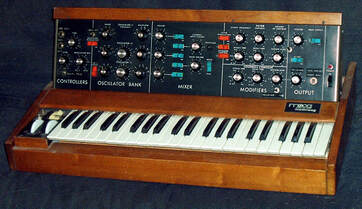 We are in the middle of a major technological revolution, with large-scale language models such as GPT (and its app ChatGPT) making collecting information and reporting in the form of text immensely easier than it has ever been. If the early problems (like imprecision and untruths) can be worked out quickly, which seems likely, is that what the future will look like? Maybe so, but there are reasons to suggest that the needle can turn back to older technologies, such as persons typing on their computers. Let us not try to speculate about ChatGPT now, because it is in the future, but instead look at a lesson from a technological revolution in the past. Conveniently, Andrew Nelson, CallenAnthony, and Mary Tripsas just published research on a modern technologybecoming replaced by an older one in Administrative Science Quarterly. This is a technology that you are familiar with because you have heard it and possibly owned it too – the digital music synthesizer. It was the replacement of another technology that you have heard, but probably not owned because it was so hard to use – the analog music synthesizer. What is the difference? Technically the progress made by the digital synthesizer was that music is produced by translating a digital stream into sound (which is always analog), which in turn requires a digital processing device and allows the same processing device to use pre-programmed and stored sounds. Push a button to get a piano, or another analog instrument, or a sound not produced by any instrument. Analog synthesizers are analog all the way, which requires turning various knobs to produce the desired sound. The digital option is much, much easier to use and produces a great variety of sounds. Digital synthesizers still dominate the living rooms (or whatever other rooms) in people’s houses where children learn to play keyboards and aspire to become pianists. They are so flexible in use that they dominated the stages of bands too. But then, something happened. The great ease of using them meant that they leveled the field too much, made keyboardists sound too similar to each other, and made it harder to produce unique and personal sounds. This might not have been a problem for a digital technology doing surgery – we want reliable and reproducible surgery, not personally expressive surgery. But musicians are artists looking for unique expressions, stirring a demand for a return of the older, harder to use, but more expressive technology. What next? Digital technology is very advanced – it can skillfully pretend to be analog technology, and indeed digital synthesizers emulating analog ones soon appeared in the market and became popular. But in a world inhabited by members of a powerful occupation who require a technology to display their personal ability and expression, that could never be enough. So, the technology moved again to meet their requirements, concluding a cycle that ended up where it started. Or more accurately, these technologies coexist now, and what each musician chooses says a lot about who they are and what they are trying to accomplish. For the very elite, personal expression through adjusting all the knobs to produce just the right sound is the way to go. For the other layers, all the way down to the 4-year-olds discovering that they can play music, the ease of the digital synthesizer is still the convenient option. So if you are telling people that ChatGPT can never become a writer, keep in mind that there are many different kinds of writers with different needs. Maybe you will also become fascinated, find ChatGPT convenient for a while, and then go back. That just means that you are similar to the most ambitious musicians. Many others will be fine using the digital writing synthesizer. Nelson, Andrew, Callen Anthony, and MaryTripsas. 2023. “If I Could Turn Back Time”: Occupational Dynamics,Technological Trajectories, and the Reemergence of the Analog Music Synthesizer. Administrative Science Quarterly, forthcoming. Comments are closed.
|
Blog's objectiveThis blog is devoted to discussions of how events in the news illustrate organizational research and can be explained by organizational theory. It is only updated when I have time to spare. Archives
May 2024
Categories |
 RSS Feed
RSS Feed